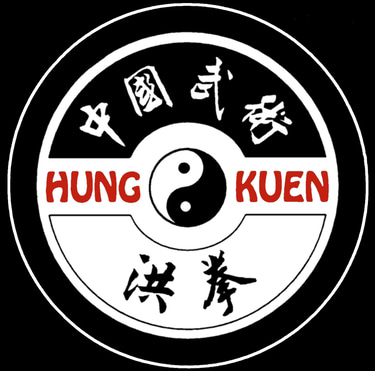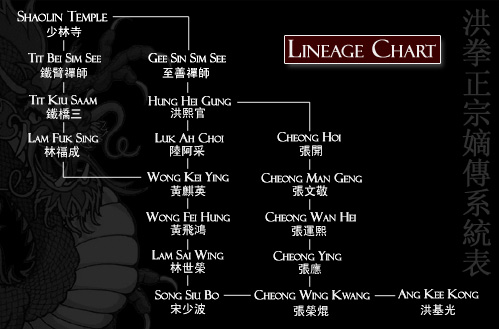

Sifu Ang Kee Kong
Our club is overseen by Sifu Ang Kee Kong, and is one of his network of Kung Fu schools across the UK.
Sifu Ang arrived in the UK in 1984, and immediately made an impact, teaching in an open manner to all those who wish to learn.
His lineage can be traced back to the ancient Shaolin Temple. Find out more below.
He continues to teach today and regularly runs gradings and master classes at our club.


Sifu Ang began learning Hung Kuen at an early age from Sifu Cheong Wing Kwang in his home country of Malaysia.
Sifu Ang was quickly recognised as a highly competent student, and by the age of 15 began teaching as a student instructor. By 17, Sifu Ang had risen to the level of full instructor and began making a name for himself in the martial arts community of Malaysia, winning many tournaments inlcuding the Malaysia Open Championships in 1978.
Sifu Ang’s father, Ang Two Yong was also a Hung stylist, originating from Ting Hai village in Guangdong.
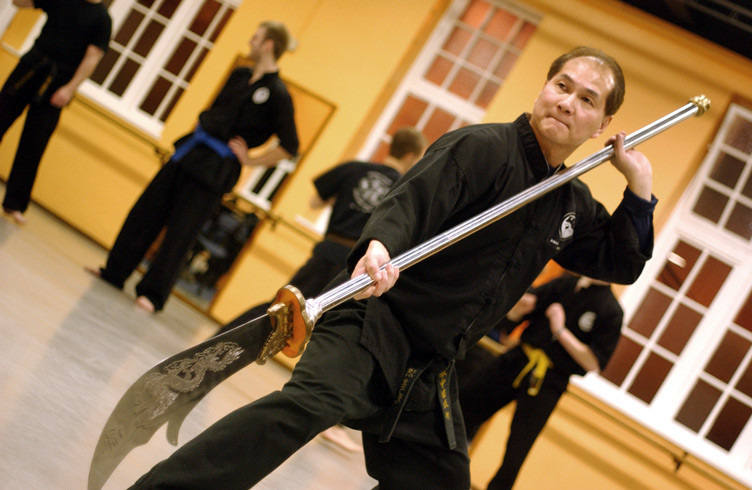

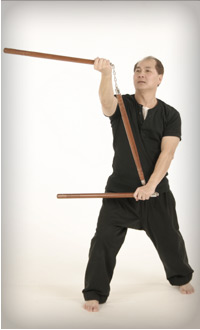

Sifu Cheong Wing Kwang
Sifu Cheong Wing Kwang was personally trained and was the favourite student of the late Song Siu Bo. Sifu Cheong founded the Gao Pei Physical Culture Association in Malaysia and besides being a master of the overt and external aspects of Hung Kuen also practiced and taught the internal aspects of our art, including Chi Kung (breathing) and Dit Dar (medicine).
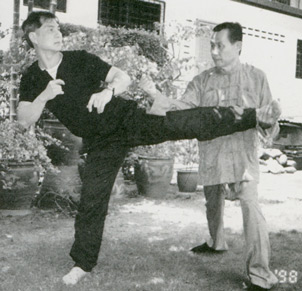

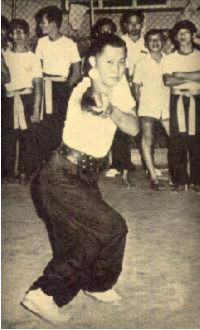

Song Siu Bo
Song Siu Bo grew up in Guangdong, and trained under the legendary master, Lam Sai Wing. After studying under Lam Sai Wing for many years, Song Siu Bo emmigrated to Singapore with his niece Song Chiu Yuen. Whilst in Singapore, Song Siu Bo established the Singapore Lin Nam Pugilistic Gymnasium where he taught his art. Song Siu Bo later emmigrated to Malaysia and settled there as a tea merchant finding many new students to pass on his art.
Lam Sai Wing
Born in 1860, Lam Sai Wing grew up in a family of martial artists, and had already many years of training from an early age before he set out in his search to find the best kung fu masters in order to improve his skills.
It is said that Lam Sai Wing had heard much about Wong Fei Hung, and challenged him to prove his skill. Lam Sai Wing was no match for Wong Fei Hung, and he was easily defeated, and Wong Fei Hung later accepted Lam Sai Wing as his student. Lam Sai Wing quickly became Wong Fei Hung’s top student, and learned everything from his master.
Lam Sai Wing did much to promote Hung Kuen, teaching openly to anyone wishing to learn, and had many superb students of his own.
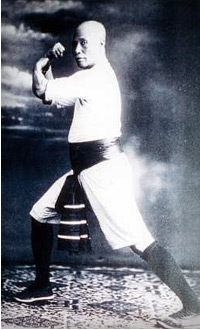

Wong Fei Hung
Wong Fei Hung is widely accepted as the father of modern day Hung Kuen thanks to additions and refinements in the forms and techniques of Hung Kuen, most famously responsible for the re-choreographing of Fu Hok Seung Ying Kuen (tiger crane double shape fist).
One of the greatest martial artists to have ever lived, Wong Fei Hung accepted many challenges, and never lost.
Wong Fei Hung died in 1924, leaving behind a great legacy in the form of many dedicated and proficient students. One of whom was his wife, Mok Gwai Lan who, at 83 years old, famously performed Fu Hok for Hong Kong TV.
Wong Fei Hung is without doubt one of the most famous masters of kung fu in history. His life has been immortalised in hundreds of films, publications, and TV series and many famous actors have assumed his role including Jackie Chan, Jet Li and Kwan Tak Hing.
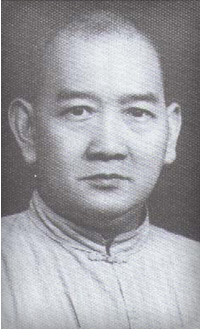

Wong Kei Ying
Wong Kei Ying learned kung fu first from his father Wong Tai, then later from Luk Ah Choi. After many years of study Wong Kei Ying mastered the art, and set up clinic in Guangdong where he practiced traditional chinese medicine and taught kung fu.
Wong Kei Ying’s skill was legendary and along with his son, Wong Fei Hung, he was known as one of the Ten Tigers of Guangdong. Wong Kei Ying traveled all over China with his son, and they met many skilled kung fu practitioners and learned from their encounters.
Wong Kei Ying and his son famously learned the powerful internal form Tit Sin Kuen (iron wire fist) from Lam Fook Sing, a student of the famous Tit Kiu Sam. It is said that the form was passed on in gratitude after Wong Kei Ying treated a bystander injured accidentally in a street performance by Lam Fook Sing. Tit Sin Kuen remains the highest level of Hung Kuen taught today.
Luk Ah Choi
Luk Ah Choi was a well known disciple and a classmate of Hung Hei Gung in the Shaolin Temple. It is said that when Gee Sin Sim See heard of Hung Hei Gung’s school in Fa City in Guangdong he sent Luk Ah Choi to learn from his former classmate, and to help him with the development and promotion of the school.
He became an expert of the style, learning everything from Hung Hei Gung, including his famous Fu Hok Sueng Ying Kuen. After many years of training in Fa City, Hung Hei Gung sent Luk Ah Choi to Canton, to open a school and spread the arts even further. Luk Ah Choi’s best student was Wong Tai, though he later taught his son also, Wong Kei Ying.
Hung Hei Gung
Legend has it that Hung Hei Gung was a descendant one of the sons of Ming Emperor Chung Chen, and was active in many anti-Ching activities. Hung Hei Gung sought refuge in Shaolin fearing persecution from the Ching government and it is here that he became one of the top students of the Abbott Gee Sin Sim See, specialising in Tiger style. After the massacre of the Shaolin Temple, Hung Hei Gung spent many years hiding with the Red Boat Opera Troupe, travelling all over China.
It is said that on his travels, he met and married Fong Wing Chun, an expert in the Crane style having learned from her uncle, the legendary Fong Sai Yuk. Hung Hei Gung took the best parts of his wifes Crane style, and incorporated it into his own Tiger style, creating the famous Fu Hok Seung Ying Kuen, or Tiger Crane Double Shaped Fist. Once the ban on kung fu was lifted, Hung Hei Gung set up a school in Fa City.
Gee Sin Sim See
Gee Sin Sim See was one of the original 5 elders from Northern Shaolin. It is said that when Northern Shaolin was destroyed by the Ching in the 17th century Gee Sin fled to Southern Shaolin where he continued to teach kung fu and support anti-Ching activity.
Gee Sin became the Abbott of Southern Shaolin and had many students, including Hung Hei Gung and Luk Ah Choi. After the destruction of the Southern Shaolin temple, Gee Sin fled a second time, and ended up travelling with the famous Red Boat Opera Troupe, where the low, powerful stances of Hung Kuen were further developed.
It is said that the main characteristics of Hung Kuen as we know it today, such as low stances, and strong footwork were born from the time spent in the confines of the cramped and rocking red boats.
